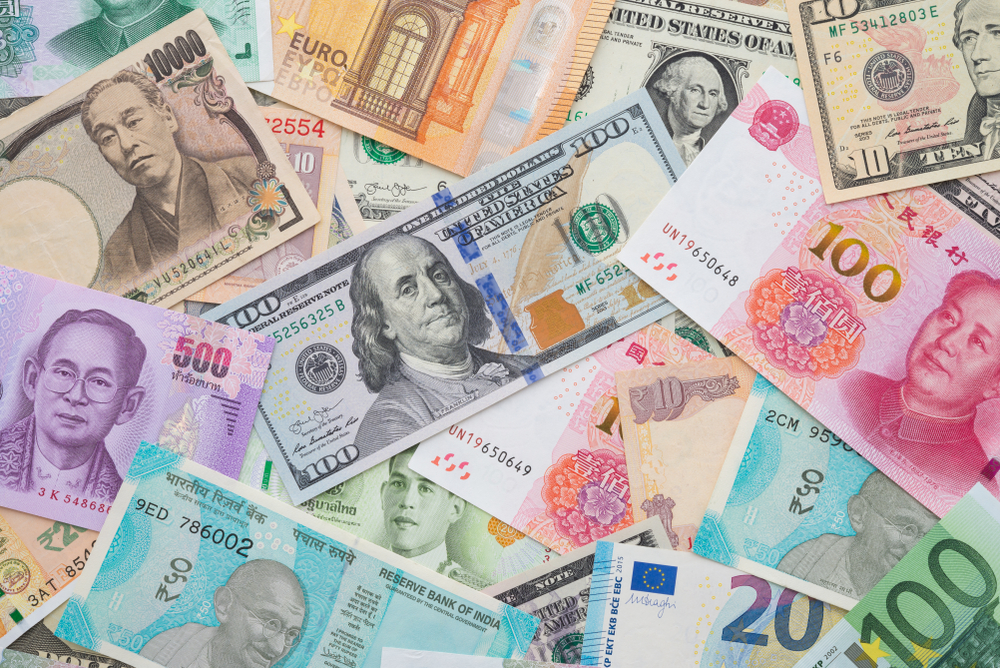Did you ever save coins in a jar as a kid? What about getting money under your pillow from the tooth fairy? How about heading to your favorite hot dog stand or quaint roadside eatery for a bite to eat at lunch? What about yard sales, lemonade stands, and Girl Scout cookies?
Now, imagine a world without those things.
That’s what a cashless society would be like.
More seriously, though, the world needs currency and cash for other circumstances that aren’t just quaint and familiar anecdotes from our small-town neighborhood vibes. In fact, moving to 100% digital payments would be a disaster.
What Happens to Digital Payments When Electronics Don’t Work?
One of the top reasons we still need cash as a society is when electronics don’t work or if the internet goes down. More personally, what happens if someone loses their smartphone or changes smartphone providers? Would that person be able to pay for items in stores?
Major internet outages, which can disrupt electronic payments, happen quite often around the world. In the last week of January 2021 alone, S&P Global noted there were 300 internet outages globally. In just one week.
Thousand Eyes monitors internet outages and tracks major ones. Amazon Web Services (AWS) had three significant outages from July 2022 to June 2023. Microsoft had two big outages within two weeks in early 2023.
Internet and telecommunications outages can disrupt electronic POS machines because they rely on getting information from remote sources. Internet outages can disrupt the very commerce that drives our economic engine.
And let’s not forget cyberattacks that can steal people’s financial information. Major retailers like Target, Home Depot, eBay, Neiman Marcus, and Saks Fifth Avenue all had their customer’s private information compromised, some of which exposed the credit card information of millions of consumers, according to Arctic Wolf.
What’s one way to save people from the vagaries of cyberattacks on their financial information? Cash.
What About Central Bank Digital Currencies (CBDCs)?
There is continued uncertainty regarding digital-only currency produced and monitored by central banks. There are upwards of 80 central banks around the world in some stage of implementing central bank digital currencies (CBDCs). The United States is still investigating whether this is a viable option.
What happens to these digital currencies if hackers penetrate their systems? We’ve already seen successful hacks of cryptocurrency systems. CBDCs could be next, notes the Cato Institute. Further, no one knows how the implementation of CBDCs would affect the stability of financial markets.
Any sudden changes away from cash can destabilize an economy due to a lack of cash deposits in a bank, notes the IMF. People’s privacy will become a concern because their spending habits and transactions will always be under scrutiny from a third party that monitors and facilitates the transactions, which would be the central banks in the case of CBDCs.
New digital technology can make it harder for central banks to keep inflation in check. Private sector banks that offer interest-bearing accounts could suffer if consumers put their money into electronic CBDC accounts at zero interest because they are perceived as safer.
Uncertainty surrounding 100% digital currency as a new economic engine is the main reason we still need cash.
People Still Feel Cash Is a Viable Payment Option, Even in the United States
JD Power released the results of a survey in August 2023 outlining the preferences of American consumers when paying for items. Debit cards were used by 78% of survey respondents. Cash was second at 74%. Despite the proliferation of digital wallets and paying directly with a smartphone, those payment methods were only used by 36% and 20% of consumers, respectively.
Cash is still a major player in many of the world’s largest economies, notes the FIS Global Payments report from 2023.
The FIS report notes the highest cash share of point-of-sale (POS) transactions are in these countries as of 2022:
- Nigeria, 62%
- Thailand, 56%
- Japan, 51%
- Spain, 44%
- Germany, 39%
- Saudi Arabia, 39%
- Mexico, 39%
- Colombia, 36%
Coins and currency still present a large percentage of POS transactions necessary to keep these huge economies churning forward.
Cash Still Needs Anti-Counterfeiting Measures
Cash produced by world governments every year still needs anti-counterfeiting measures appropriately installed. Threat intelligence expert Cybersixgill noted a whopping 91% year-over-year increase from 2022 to 2023 for advertising for counterfeit currency used by criminal elements in the dark web. Unique actors in this dark web activity increased by 82% YoY.
Despite cryptocurrencies being used in cyberattacks, counterfeit currency is still a major player in criminal activity. Vastly improved and cost-effective printing technologies are making it easier for new players to enter the counterfeit currency market. World currencies need to adapt in order to keep up with advanced printing technologies in the hands of criminal elements.
The report ends with this assertion:
“Despite the rise of digital currencies, the large volume of posts advertising counterfeit currency on the underground indicates the enduring relevance of cash.”
Angstrom Technologies, Inc., can improve the anti-counterfeiting properties of currency with our advanced optically variable pigments (color-changing inks or optically variable inks) and other custom-formulated inks.
Contact us or call 859-282-0020 to talk to our team.




